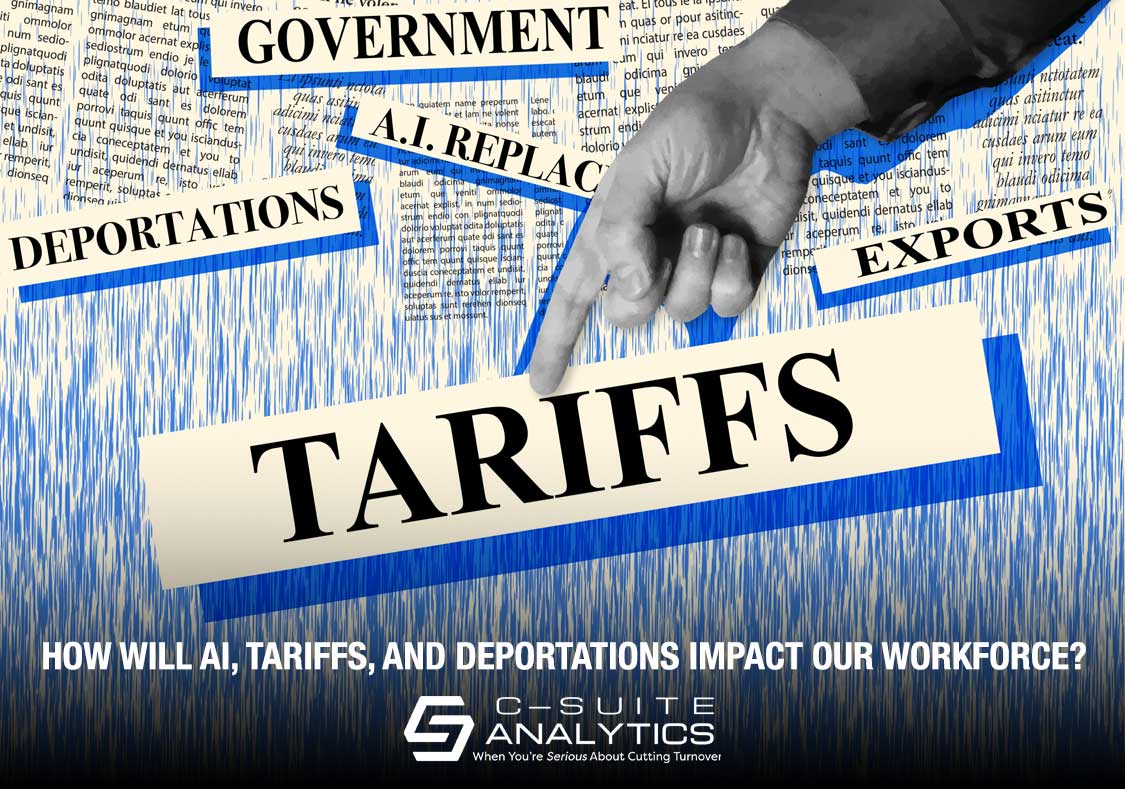AI, deportations, tariffs, and birthrate declines are reshaping America's workforce—blue- and white-collar alike. From baby boomer exits to AI disruptions, breaking down the workforce challenges no leader can afford to ignore.
Who Is Your Superhero for Improving Engagement & Retention?

Let’s make this multiple choice. The superhero for improving employee engagement and retention is…
- Spiderman?
- Wonder Woman?
- Your CFO?
The correct answer is your CFO…your chief financial officer…even though Spiderman would make work more fun. Everyone on your top team including your CEO should look to your CFO to provide teeth for your engagement and retention efforts. But for many HR executives this is especially hard because HR tends to stay at arms-length from finance, operating in parallel worlds without much mutual understanding of purpose.
CFOs can make anything better because CFOs have power. CFOs manage their company’s wallets, and in the process are believed to know the very best ways to not only control costs but also make the best decisions about which costs are the right ones. While CEOs have final word on key decisions, your CEO probably listens most closely to your CFO. And the reason why CEOs listen so closely is because they both speak the same language…punctuated by dollar signs. In fact, most CEOs come from finance.
The HR/CFO disconnect starts with cluelessness…in that finance usually has no knowledge nor instinct regarding the dollar values of engagement nor retention. To finance these are usually second-class metrics, the ones CHROs report after CFOs delivers the ultra-important financial update. Profits first, people second…despite the logical connection that people make the profits.
I recently visited with the CFO of a client aerospace firm. When asked about the cost of turnover, the CFO said he didn’t know, had never considered it, and was never taught how to measure it. That metric was not part of his standard reporting so in his 30+ years of finance work he had never considered turnover as a cost. I wondered how many times he sat in meetings and heard about turnover metrics but never once associated this with dollars or productivity…when he was his companies’ protector of those dollars and productivity.
We then scheduled a meeting to determine turnover’s cost for a key job, and I suggested he would find total company turnover was his second or third highest cost after pay and benefits. A few days later we did a cost study on losing one engineer and the cost came to $121,450, which he thought was reasonable after considering all of the data we input to reach that amount. The next day he called to say he did some further analysis and found turnover to be his company’s second-highest cost. This was eye-opening to him, completely new information to a seasoned CFO in his fifties.
Think about the doors this opens. Imagine one day you sit in an executive meeting and your CFO says, “Our plant in Macon has higher product returns than our other plants. I did some checking and that plant also has the highest turnover and the lowest engagement so we can clearly see the problem”. No more groveling, then, for topside engagement and retention support…because the CFO gets it…and will get you all the support you need.
Let me suggest two tools on our website for you to share with your CFO. The first is our free turnover cost calculator located on our homepage, and the second is a white paper that provides proven correlations between engagement and productivity.
Once you move your executive team’s thinking toward the dollar implications of engagement and retention, the faster you will move them away from useless benchmarks. How useless? For turnover, your saying our turnover is better than the benchmark results in high-fives which provides no leverage to make it better. Saying instead that turnover costs $2.4 million each year though drives change. The same is true for engagement where top teams are usually content to be in the middle of the pack, plus most of them forget about engagement a month after the survey. I suggest you remove your addiction to benchmarks and move your attention toward costs…and make your CFO your superhero to help you succeed.
Please email your comments to me at DFinnegan@C-SuiteAnalytics.com. You are also welcome to forward this blog to anyone you believe would find it helpful.



